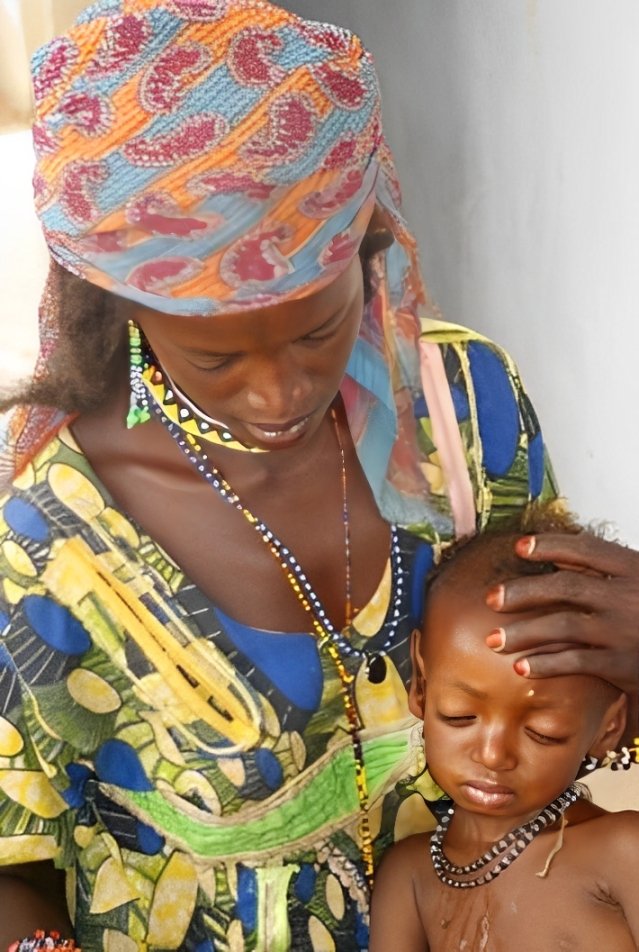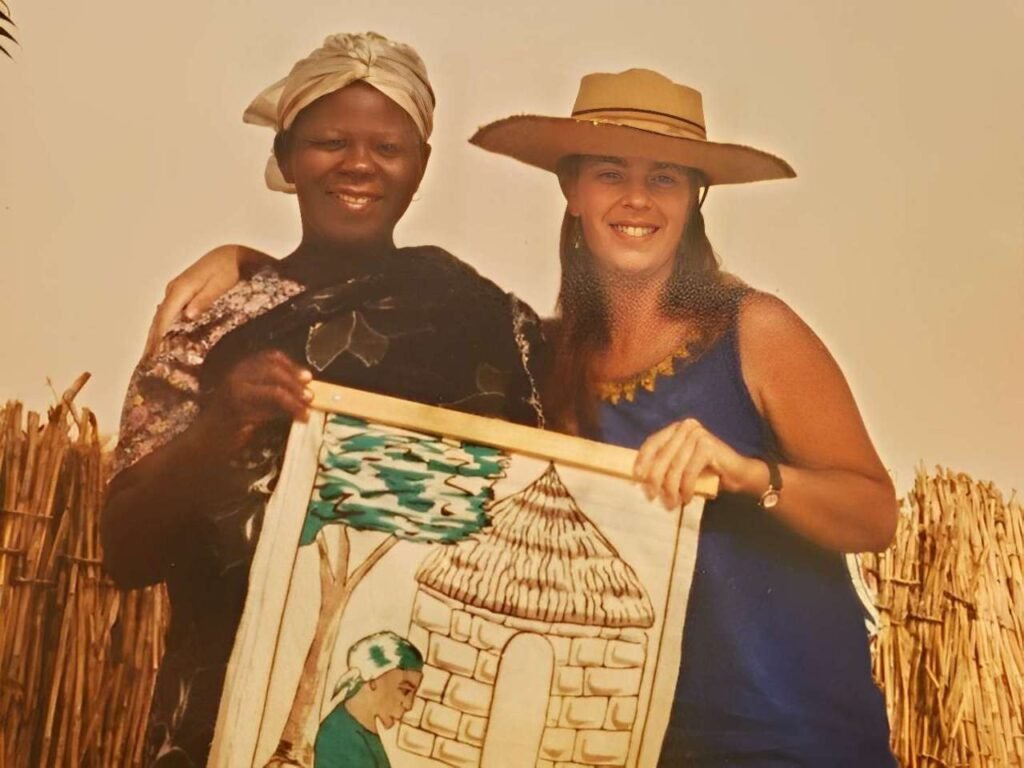Meet Fatu.

Fatu was a Fulani mother I met during a field visit years ago, when I was working as a Regional Director for a large international NGO. She had brought her severely malnourished child to a rural clinic under my purview. The child was heartbreakingly frail—his limbs long and thin, with pronounced bilateral edema in his feet and hands. His hair had turned a rusty red, his eyes were sunken, and his distended stomach told a silent story of chronic hunger. He was so lethargic he couldn’t even lift his head while cradled in his mother’s lap.
Fatu was thin, but striking. Her hair was neatly braided, and she wore layers of beaded necklaces and bracelets. Her dress was vibrant but worn, embroidered with colorful patterns. She carried herself with quiet dignity—an image so vivid she could have been a model for National Geographic. But behind her elegance was exhaustion. Her expression carried an air of surrender.
The clinic worker attending to her scolded her with well-intended but harsh advice. I sat beside her and gently tried to speak to her in Hausa—grasping for whatever words I could recall after 15 years. I asked softly, “What do you feed your baby?”
“Millet porridge,” she replied, eyes fixed on the floor. “Once a day.”
I nodded, trying not to show alarm, and asked, “Could you add oil to the porridge?”
She grimaced and shook her head. “I don’t have oil,” she said flatly.
“What about sugar?” I offered gently, hoping for a glimmer of possibility.
She let out a short, dry laugh—not from amusement, but disbelief. “Where am I going to get sugar?” she asked, meeting my eyes with a mixture of weariness and sarcasm.
“Could you add some milk?” I ventured.
She scoffed softly. “We don’t have milk,” she said, her tone edged with disbelief. To her, I imagine that the question itself felt like an insult—so far removed from her lived reality that it bordered on absurd.
She then explained, with resignation in her voice, that her husband kept all the food in a locked granary. At the beginning of each week, he gave her a fixed portion to prepare for herself and the baby—and when it ran out, it was gone. He didn’t buy vegetables, meat, spices, oil, sugar, or any so-called extras. She shrugged when I asked what her husband ate, and said, “He eats out in the village with his friends. I don’t even know what he eats.”
I listened, heart sinking, realizing that she had no control over the food supply, no power to improve her child’s nutrition, and no visible support system. The problem certainly wasn’t a lack of nutritional knowledge.
No mother wants her child to be malnourished. Every mother wants to provide the best—the most nutritious food, the tastiest food, the most satisfying meal possible. No mother would intentionally withhold those things from her child.
I realized then that many times, behavior change was not about giving advice to an individual—it was about creating a collective system of support that made it possible for people to act.

My journey into international public health began in Niger, West Africa, during my service as a Peace Corps Volunteer. Assigned as a Nutrition Volunteer, I found myself immersed in the rhythm of village life—working in health clinics, conducting home visits, and providing basic antenatal care, vaccinations, and nutritional counseling. I served seven rural communities surrounding my post, leading outreach campaigns that began with basic nutrition education, including food safety and preservation, and expanded to include recognition of danger signs during pregnancy, newborn danger signs, and warning signs in children under five. I also promoted Water, Sanitation and Hygiene (WASH) practices, along with a variety of additional community-led health education topics designed to enhance well-being and promote sustainable healthy behaviors at the household level.
Those early years grounded me in the beauty and complexity of community health. I saw firsthand the dedication of mothers doing their best with what little they had. But even then, I started to wonder why certain messages never seemed to stick. Why were the same challenges repeating themselves?
Fatu’s story helped me see the missing piece: behavior change is not about knowledge alone—it’s about power, context, and connection. It’s about asking the right questions: What are the real barriers? Who holds the resources? What social norms reinforce these outcomes? What kinds of support systems are required to make new behaviors possible—and sustainable?
At the time, I didn’t yet know about Designing for Behavior Change, Barrier Analysis, or Human-Centered Design. But I knew I needed to stop relying on “sensitization” campaigns and start co-creating solutions with the very people I hoped to serve.
That realization became the foundation for how I approach development work—and it continues to guide the way I design, lead, and advocate for meaningful behavior change.
